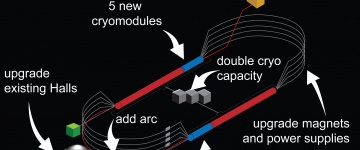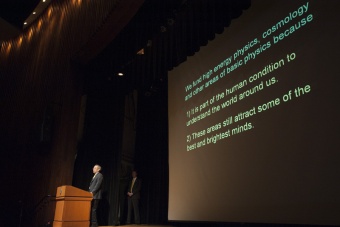Feature
The 12-GeV upgrade of Jefferson Lab’s CEBAF accelerator
The US laboratory accelerator is doubling its electron beam energy to address forces at work in protons and neutrons
Last month Jefferson Lab, instrumental in developing SCRF technology for the ILC, took a critical step in a five-year upgrade of its CEBAF accelerator. Once complete, the machine will be able to accelerate electron beams to energies of up to 12 GeV, allowing researchers to chart, with ever greater depth and resolution, the map of the nucleon.
Director's Corner
Science Diplomacy
To a very large extent, science has no boundaries. The research we perform, the discoveries we make, the collaborations we forge, and even the teaching we do is universal. As a result, science and scientists offer a unique window for understanding and collaboration with each other, advancing both science and what is referred to as science diplomacy.
Image of the week
Secretary of Energy Steven Chu speaks at FermilabUnited States Secretary of Energy Steven Chu discusses the importance of fundamental research at a public lecture on 2 June at Fermilab. Read about his talk. |
In the News
-
from physicsworld.com7 June 2011Last month physicsworld.com reported that physicists from CERN’s ALPHA experiment had trapped 309 atoms of antihydrogen for 1000 s – smashing their previous record of 38 atoms trapped for one-fifth of a second. Now we can reveal that the team’s success has brought it extra funding that, in part, will allow two new antimatter experiments to be built, as well as a new source of antiprotons.
-
from BBC News6 June 2011Scientists have succeeded in trapping atoms of anti-hydrogen for more than 15 minutes.
-
from New Scientist1 June 2011If physicists weren’t jumping up and down with excitement in April at the announcement that an unknown particle had been glimpsed at Fermilab, they are now.
Copyright © 2026 ILC International Development Team




